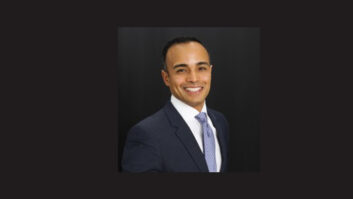WASHINGTON State-of-the-art computer modeling would greatly simplify AM directional antenna verification without compromising the validity of the data collected, AM antenna experts believe. The technology also would save broadcasters thousands of dollars were it used in lieu of actual radial field measurements.
An ad hoc committee comprising some of the top AM directional consultants and broadcast engineers in the country is hoping to convince the FCC to revamp its current broadcast rules to allow Method-of-Moments (MoM) computer modeling data for proofing AM directional antenna arrays.
The committee met first in 1994 in response to an FCC Notice of Inquiry relating to performance measurements for AM DAs. The NAB has acted as facilitator in the group’s study and discussion of specific issues related to AM directional antennas.
The commission overhauled AM antenna proof rules in 2001, simplifying partial proofs and making other changes, and left open the possibility of computer modeling for AM directional proofs when it released a Further Notice of Proposed Rulemaking and a Report and Order. Commission activity on the matter has slowed since then despite a high number of responses at the time of the proposal, said experts.
MoM modeling and proofing refers to computer modeling techniques based on Maxwell’s equations, which relate the electrical current flowing in a tower to the electric and magnetic fields around a tower. In the modeling process, the towers of an AM directional antenna system are segmented in order to provide as much accuracy as possible. The modeling, which uses Numerical Electromagnetic Code version 4 or MININEC, its light stripped-down version, takes into consideration currents and their phase relationships, tower spacing and mutual coupling in order to predict the field that is produced.
Computer modeling matures
The original NEC software was developed in the early 1980s at Lawrence Livermore Labs under contract to the U.S. Navy and later released for public use. There are many providers that use the NEC algorithms in their own software for sale.
Proponents of computer modeling believe it has matured to a point where it can help supplement radial field measurements, but not totally replace the information.
“Refinements in the computer code are ongoing, making it easier to model antenna systems. Additionally, the improvements in computer hardware and operating systems have been significant, leading more engineers to experiment with modeling software on modern PCs,” said John Marino, vice president, NAB Science and Technology.
The cost savings would be significant, Marino said.
“The cost of proofing an AM directional array right now can rise into the tens of thousands of dollars. Fieldwork requires days, weeks, sometimes months to collect and analyze data,” said Marino.
“Computer modeling offers an efficient way to arrive at the same goal, provided specific criteria are followed in the modeling process. This also allows broadcast engineers to better utilize their time,” he added.
Ben Dawson, president of Hatfield & Dawson Consulting Engineers, evaluated the rules regarding AM directional antenna performance verification and determined that if computer verification were adopted, full proof of performance cost could be as little as 10 percent of present cost.
“The cost savings in nearly all cases would be very substantial and could be that great,” Dawson said. “Use of computer modeling in offshore projects, where the FCC is not the regulatory authority, has allowed us to make substantial savings and eliminated the logistics hassles of field measurements in situations where terrain, access and sometime personal safety are troublesome.”
Most consulting engineers are familiar with MoM modeling and proofing, said Dawson. However, the group hopes station engineers will be able to learn and make use of the new tool to maintain the proper performance of their AM antenna arrays.
Proof sample
Discussions at a November meeting of the ad hoc committee, organized by Dawson and Ron Rackley of du Treil, Lundin & Rackley and attended by several FCC staffers, centered on the requirements to proof a sample system and what guidelines to follow.
Several attendees said they believe the FCC is waiting on the industry to set parameters that the commission can approve before moving forward. The group does not plan to file a formal request with the FCC. However, individual members of the group and the NAB have filed comments in the past.
For its part, a commission representative said the agency is not considering any new AM directional antenna performance verification rulemaking.
“We attended the November forum by invitation of the organizers. There is no current FCC activity on this matter to report,” said Susan Crawford, assistant chief in the FCC’s Audio Division.
If the FCC does act, issuing a new NPRM would not be necessary since MM Docket 93-177 is still open, Crawford said.
The NAB’s Marino said the ad hoc committee planned to meet again in January to settle remaining questions and possibly set eligibility parameters.
“The primary focus will remain further defining the conditions which MoM can be used with the greatest accuracy. Additionally, in order to rely on MoM modeling in the real world of AM arrays, our methods of monitoring antenna element current and phase needs to be as accurate as possible over the long term. The group is presently studying this area and expects to discuss it at the upcoming meeting,” Marino said.
Cris Alexander, director of engineering for Crawford Broadcasting, said he supports allowing the use of MoM for AM directional antennas. However, he does have several reservations.
“Assuring the long-term stability of the array is one. The other has to do with who is certifying arrays using the MoM method,” Alexander wrote in the December 2006 issue of “The Local Oscillator,” the newsletter of the Crawford Broadcasting corporate engineering department.
“I would be comfortable with the certification of any of the people at the meeting, but there are others out there who I am certain would not hesitate to certify an array without following proper procedure.” Alexander also contributes to Radio World.
Marino said there is concern among some observers that many broadcast engineers are inexperienced with MoM software, which could lead to incorrect results.
The ad hoc committee “has been working to develop the proper criteria under which MoM may be used by those inexperienced with computer modeling,” Marino said.












